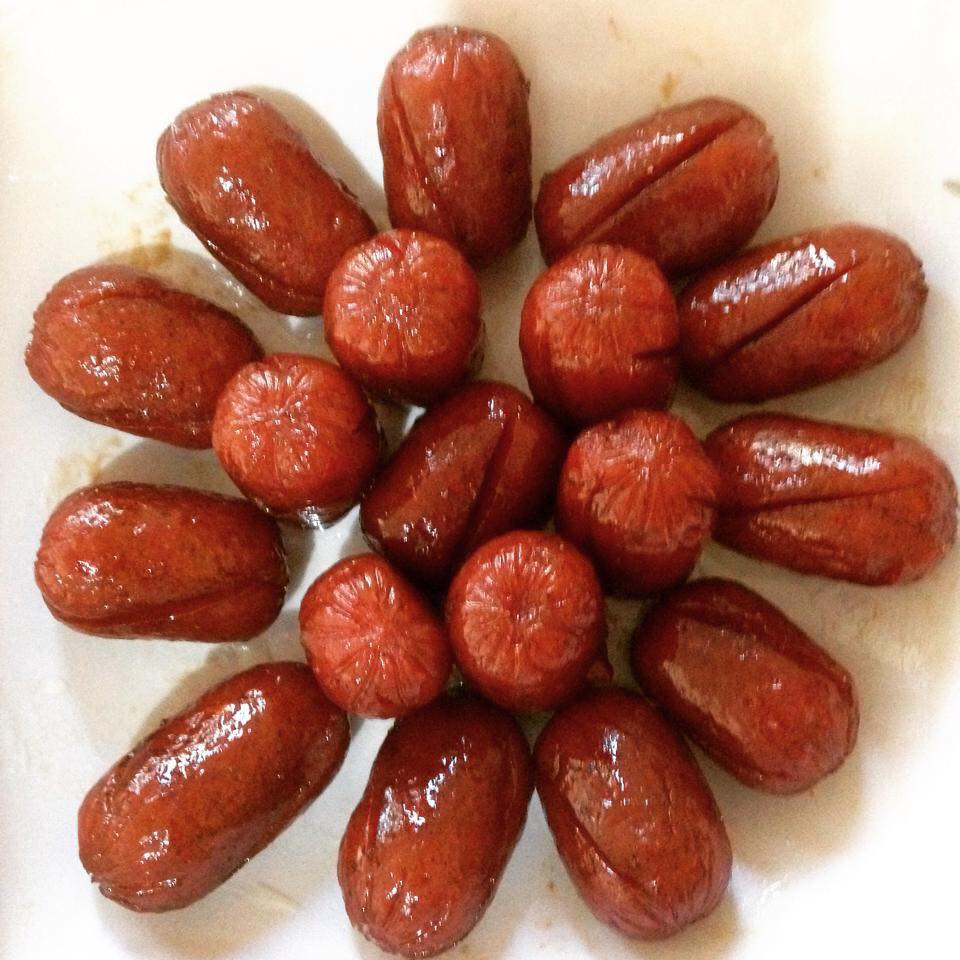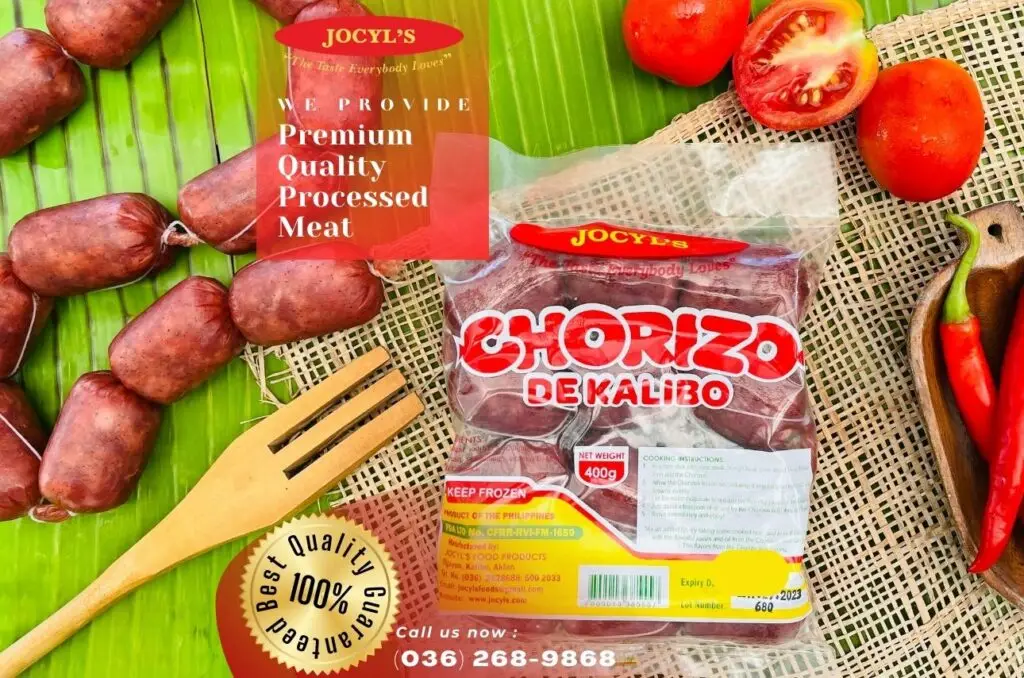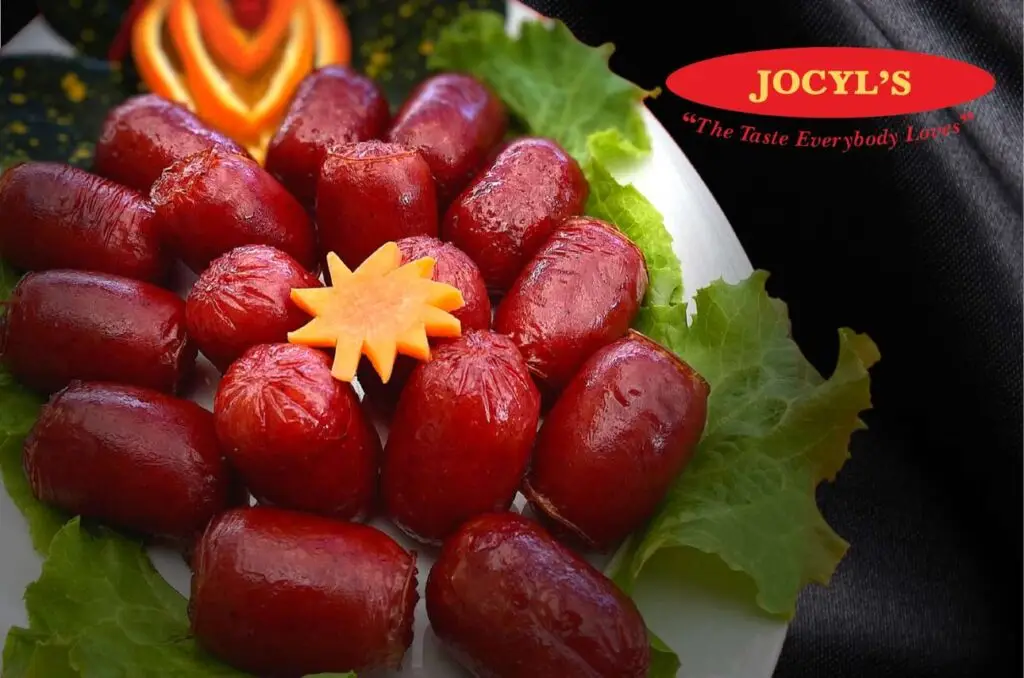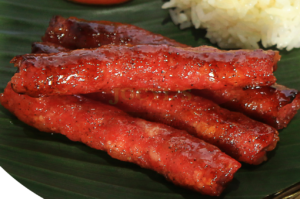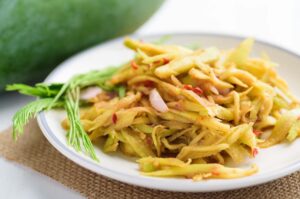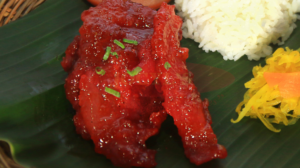
About Us
Jocyl's Food Products (a.k.a "Chorizo de Kalibo") is a bold and forward-thinking company whose goals are set to create surprising ways of developing and promoting our products. We are entrepreneurial and visionary in producing and marketing the best chorizo and other food products from our hometown - Kalibo, Aklan, Philippines.
About UsContact Info
- Tigayon Highway, Barangay Tigayon, Kalibo, Aklan
- +63362628688
- jocylsfoods@gmail.com
- Tigayon Highway, Barangay Tigayon, Kalibo, Aklan
- jocylsfoods@gmail.com
- +63362628688

Discover the Best Authentic Filipino chorizo Recipes Today!
-
Jocyl's Food Products > Blog > Food > Discover the Best Authentic Filipino chorizo Recipes Today!
Filipino cuisine is a vibrant tapestry of flavors and traditions, and few ingredients capture its spirited essence quite like Authentic Filipino chorizo. Known for its distinct blend of sweet, garlicky, and tangy notes, this sausage is a celebrated staple in many Filipino households. In this comprehensive guide, we’ll delve into the history, preparation, and versatility of authentic Filipino chorizo, while offering fact-based recipes that honor tradition and excite the palate. Whether you’re a seasoned chef or a curious foodie, this article is designed to help you master these recipes and elevate your culinary repertoire.
The Rich History of Filipino Chorizo
Spanish Influence and Local Innovation
The story of Filipino chorizo begins during the Spanish colonial period, when Spanish culinary traditions blended with indigenous Filipino ingredients and techniques. While the original Spanish chorizo is known for its smoky paprika flavor, the Filipino version has evolved to suit local tastes—resulting in a sausage that is typically sweeter, tangier, and imbued with a unique garlicky punch.
Filipino chorizo reflects centuries of adaptation. Early settlers adapted Spanish recipes using available local ingredients such as native pork cuts, sugar, vinegar, and a variety of spices. This process of culinary fusion created a sausage that not only pays homage to its Spanish roots but also resonates with Filipino traditions and flavors.
Regional Variations
Throughout the Philippines, different regions have put their own spin on chorizo. For instance, some areas prefer a slightly spicier variant, while others emphasize sweetness and the aromatic quality of garlic. These variations are a testament to the dynamic culinary landscape of the country and underscore the importance of preserving local food heritage.
What Makes It “Authentic”?
Key Ingredients and Flavor Profile
Authentic Filipino chorizo is celebrated for its rich, multi-dimensional flavor profile. The following ingredients are typically used:
- Pork: The base of Filipino chorizo is usually high-quality pork, often with a balanced ratio of lean meat to fat to ensure juiciness and flavor.
- Garlic: A generous amount of garlic is essential. It imparts a bold flavor and aroma that distinguishes Filipino chorizo from other types.
- Vinegar: Vinegar not only helps tenderize the meat but also adds a tangy note that cuts through the richness.
- Sugar: A touch of sugar balances the acidity and brings a subtle sweetness that enhances the overall taste.
- Spices: Salt, pepper, and sometimes a hint of paprika or chili powder are added to create a layered flavor profile.
- Natural Casings: Traditional recipes often use natural pork casings, which contribute to the sausage’s authentic texture and taste.
The Art of Curing and Fermentation
In many authentic recipes, the meat mixture is marinated for several hours or even overnight. This marination process allows the flavors to meld, ensuring every bite is packed with depth. Traditional methods may also involve curing, which not only preserves the sausage but also intensifies its flavor through natural fermentation processes.
Traditional Preparation Methods
Handcrafted Techniques
Creating Authentic Filipino chorizo involves a blend of art and science. The process typically starts with:
- Meat Selection and Grinding: High-quality pork is carefully selected and ground to the perfect consistency. The meat should be coarse enough to retain texture but fine enough to mix evenly with spices.
- Mixing and Marination: The ground pork is mixed with garlic, vinegar, sugar, and spices. The mixture is then left to marinate, allowing the flavors to integrate fully.
- Stuffing: The seasoned meat is stuffed into natural casings. This step is often done manually, ensuring that the filling is evenly distributed.
- Curing: Some traditional recipes call for a brief curing period to enhance flavor and aid in preservation.
- Cooking: Authentic Filipino chorizo can be enjoyed raw, lightly fried, or fully cooked, depending on the intended recipe.
This artisanal process is not only about producing a flavorful sausage but also about preserving cultural heritage and culinary traditions passed down through generations.
Recipe 1: Classic Authentic Filipino Chorizo Breakfast Skillet
Ingredients
- 1 pound of Authentic Filipino chorizo, sliced into 1/4-inch rounds
- 4 medium potatoes, peeled and diced
- 1 large onion, chopped
- 1 red bell pepper, diced
- 3 cloves garlic, minced
- 4 large eggs
- Salt and pepper to taste
- Fresh parsley for garnish
- 2 tablespoons vegetable oil
Instructions
- Prepare the Ingredients:
Begin by slicing the authentic Filipino chorizo into rounds. Dice the potatoes and chop the onions and bell peppers. Mince the garlic finely to release its aromatic oils. - Cook the Chorizo:
Heat the vegetable oil in a large skillet over medium heat. Add the sliced chorizo and cook until it starts to brown, releasing its flavorful oils into the pan. - Sauté the Vegetables:
Add the diced potatoes to the skillet. Stir frequently, allowing the potatoes to absorb the flavors of the chorizo. After about 5 minutes, add the onions, bell peppers, and garlic. Sauté until the vegetables are tender and slightly caramelized. - Create Wells for Eggs:
Once the vegetables are cooked, create four small wells in the mixture. Crack an egg into each well, careful not to break the yolks. - Cook the Eggs:
Cover the skillet with a lid and let the eggs cook to your desired doneness. For runny yolks, cook for about 4-5 minutes; for firmer yolks, allow an additional 2 minutes. - Garnish and Serve:
Season with salt and pepper to taste. Garnish with fresh parsley before serving. This hearty breakfast skillet is best enjoyed with warm crusty bread or steamed rice.
Nutritional Insights
This dish is a balanced meal, rich in protein from the pork and eggs, and loaded with carbohydrates from the potatoes. The authentic flavors of Filipino chorizo make this breakfast both satisfying and uniquely delicious.
Recipe 2: Authentic Filipino Chorizo and Rice Paella
Ingredients
- 1 cup uncooked rice (preferably short-grain)
- 1/2 pound Authentic Filipino chorizo, sliced
- 1/2 pound chicken thighs, cut into bite-sized pieces
- 1 medium tomato, chopped
- 1 green bell pepper, sliced
- 1 small onion, chopped
- 3 cloves garlic, minced
- 2 cups chicken broth
- 1/2 cup frozen peas
- 1 teaspoon paprika
- 1/4 teaspoon saffron threads (optional for extra aroma)
- Salt and pepper to taste
- 2 tablespoons olive oil
- Fresh cilantro or parsley for garnish
Instructions
- Prepare the Base:
In a paella pan or a large skillet, heat the olive oil over medium heat. Add the chopped onions and garlic, and sauté until translucent. - Brown the Meats:
Add the chicken pieces and sliced chorizo to the pan. Cook until the chicken is browned on all sides and the chorizo has released its rich, spiced oils. - Incorporate the Vegetables:
Stir in the chopped tomato and green bell pepper. Allow them to soften, which should take about 3-4 minutes. - Add the Rice and Spices:
Mix in the uncooked rice, paprika, and saffron threads if using. Ensure that the rice is evenly coated with the mixture of meat and spices. - Pour in the Broth:
Slowly pour in the chicken broth and bring the mixture to a simmer. Reduce the heat, cover, and let it cook for about 18-20 minutes, or until the rice has absorbed the broth. - Finish with Peas and Garnish:
In the last 5 minutes of cooking, add the frozen peas. Once the rice is tender and the liquid has been absorbed, remove from heat. Garnish with freshly chopped cilantro or parsley.
Culinary Notes
This paella variation is a fusion of Spanish technique and Filipino ingredients. The use of Authentic Filipino chorizo not only elevates the dish with its robust flavor but also pays homage to the historical culinary ties between the Philippines and Spain.
Recipe 3: Authentic Filipino Chorizo Pasta with Garlic and Peppers
Ingredients
- 1/2 pound Authentic Filipino chorizo, thinly sliced
- 8 ounces pasta (penne or fusilli work well)
- 1 large red bell pepper, julienned
- 1 yellow bell pepper, julienned
- 1 small red onion, thinly sliced
- 4 cloves garlic, minced
- 1/2 cup cherry tomatoes, halved
- 1/4 cup extra-virgin olive oil
- 1/2 teaspoon red pepper flakes (optional)
- Salt and pepper to taste
- Fresh basil leaves for garnish
Instructions
- Cook the Pasta:
Bring a large pot of salted water to a boil. Add the pasta and cook according to the package instructions until al dente. Drain and set aside. - Sauté the Chorizo:
In a large pan, heat the olive oil over medium heat. Add the Authentic Filipino chorizo slices and sauté until they start to crisp around the edges, releasing their flavorful oils. - Add Aromatics and Vegetables:
Stir in the garlic and red onion. Sauté until fragrant, then add the julienned red and yellow bell peppers along with the cherry tomatoes. If you like a bit of heat, sprinkle in the red pepper flakes. - Combine and Serve:
Toss the cooked pasta into the pan, mixing thoroughly so that the sauce and flavors coat every piece. Season with salt and pepper, and garnish with fresh basil leaves. Serve warm for a delicious fusion meal that perfectly marries traditional Filipino flavors with Italian pasta.
Health and Flavor Balance
This pasta dish is a delightful medley of textures and flavors. The tanginess of the cherry tomatoes and the sweetness of the bell peppers create a balanced counterpoint to the rich, spicy notes of the chorizo. Moreover, this dish is not only satisfying but also a versatile option for a quick weeknight dinner or a festive meal.
Nutritional Benefits and Considerations
Protein and Energy Boost
Authentic Filipino chorizo is rich in protein, which is essential for muscle repair and overall health. When combined with ingredients like vegetables, rice, or pasta, it contributes to a well-rounded meal that offers both energy and essential nutrients. However, as with all cured and processed meats, moderation is key due to the higher sodium and fat content.
The Role of Spices and Natural Ingredients
The natural spices and garlic used in Filipino chorizo have been associated with various health benefits, including improved cardiovascular health and anti-inflammatory properties. The use of vinegar in the marinade not only tenderizes the meat but may also aid digestion. By focusing on traditional recipes and high-quality ingredients, you ensure that you’re enjoying a product that is as nourishing as it is flavorful.
Tips for Health-Conscious Cooks
- Balance Your Meal: Pair dishes featuring chorizo with plenty of vegetables and whole grains.
- Watch Portion Sizes: Given the rich flavor and salt content, enjoy chorizo-based meals in moderation.
- Opt for Fresh Ingredients: The fresher the ingredients, the better the nutritional profile and the more authentic the taste.
How to Store and Reuse Authentic Filipino Chorizo
Proper Storage Techniques
To maintain the quality and flavor of your Authentic Filipino chorizo, proper storage is essential:
- Refrigeration: Keep the chorizo in an airtight container in the refrigerator if you plan to use it within a few days.
- Freezing: For longer storage, wrap the chorizo tightly in plastic wrap and then place it in a freezer bag. It can be stored in the freezer for up to 3 months. Thaw slowly in the refrigerator before cooking.
- Cooking and Leftovers: Leftover chorizo dishes should be cooled to room temperature before being stored in the refrigerator. Consume within 2-3 days for optimal freshness.
Versatile Uses in Other Recipes
Authentic Filipino chorizo isn’t limited to breakfast or paella. Here are a few creative ideas:
- Sandwich Fillings: Use thin slices in toasted sandwiches for an extra kick.
- Pasta Sauces: Blend it into tomato-based sauces for a spicy twist.
- Salads: Add small pieces to salads for an infusion of flavor and protein.
- Snacks: Lightly fry chorizo slices and serve with a tangy dipping sauce.
Cultural Significance and Modern Adaptations
A Culinary Heritage
The evolution of Authentic Filipino chorizo mirrors the broader history of Filipino cuisine—a blend of indigenous ingredients and foreign influences. Today, it is celebrated not only for its taste but also for its role in cultural identity. Traditional recipes are often passed down through generations, preserving techniques that have been refined over time.
Festivals and Food Fairs
In many parts of the Philippines, food festivals and local fairs feature chorizo prominently. These events celebrate the region’s culinary traditions and offer an opportunity for local producers to showcase their craft. Such festivals reinforce the community’s pride in their culinary heritage and provide a platform for innovation and experimentation while staying true to tradition.
Fusion and Global Influence
Modern chefs are increasingly experimenting with Filipino chorizo in fusion dishes. Whether it’s a twist on classic pasta dishes or innovative street food creations, authentic recipes are making their mark on global cuisine. This trend not only broadens the appeal of Filipino flavors but also encourages culinary dialogue between cultures.
The Future of Authentic Filipino Chorizo in Culinary Innovation
Embracing Technology and Tradition
As the culinary world becomes more interconnected, there is a growing trend towards merging traditional recipes with modern techniques. Chefs and home cooks alike are leveraging technology—from social media cooking tutorials to advanced food preservation methods—to elevate the status of Authentic Filipino chorizo. This blend of old and new ensures that time-honored recipes continue to thrive in a rapidly evolving food landscape.
Sustainability and Local Sourcing
With an increasing emphasis on sustainability, many producers of Filipino chorizo are turning to locally sourced ingredients. This not only supports local farmers and artisans but also ensures that the chorizo is made from the freshest, most authentic ingredients available. By choosing products made with care and a commitment to tradition, consumers can enjoy a product that is both ethical and delicious.
Educational Outreach and Culinary Workshops
In recent years, there has been a surge in culinary workshops and educational initiatives focused on traditional Filipino cuisine. These workshops often include demonstrations on how to make authentic chorizo from scratch, allowing participants to gain hands-on experience and a deeper understanding of the cultural significance behind each recipe. Such efforts are essential for preserving culinary traditions and inspiring the next generation of food enthusiasts.
Conclusion
The journey through the world of Authentic Filipino chorizo is not just a culinary adventure—it’s a celebration of history, culture, and innovation. From its Spanish-influenced origins to the modern-day fusion dishes, Filipino chorizo continues to enchant food lovers with its irresistible flavor profile. Whether you’re preparing a hearty breakfast skillet, a savory rice paella, or a unique pasta dish, these recipes are designed to highlight the authentic taste of this cherished ingredient.
By embracing both tradition and innovation, we ensure that the legacy of Filipino chorizo remains alive and well. So, why not step into the kitchen today and discover the magic of authentic Filipino flavors? Each recipe is a tribute to the culinary artistry that has been perfected over generations, and with every bite, you’re partaking in a rich, cultural narrative.
Q & A
Q1: What is Authentic Filipino chorizo?
A1: Authentic Filipino chorizo is a type of sausage that combines high-quality pork with local ingredients such as garlic, vinegar, sugar, and various spices. It differs from its Spanish counterpart by incorporating a sweeter, tangier flavor profile that reflects the local palate.
Q2: How is Filipino chorizo different from Spanish chorizo?
A2: While Spanish chorizo is renowned for its smoky paprika flavor, Filipino chorizo is typically sweeter and more garlicky, with a pronounced tang from vinegar. The Filipino version is also influenced by local culinary practices and ingredients, making it unique in taste and texture.
Q3: What are some traditional ways to prepare Authentic Filipino chorizo?
A3: Traditional preparation involves marinating ground pork with garlic, vinegar, sugar, and spices, stuffing the mixture into natural casings, and sometimes curing the sausage to intensify its flavor. It can be cooked in various ways—from frying in a skillet for breakfast dishes to being a key ingredient in rice paella or pasta recipes.
Q4: Where can I buy Authentic Filipino chorizo?
A4: For those looking to experience the best in authentic flavor, consider trying Jocyl’s Food Products’ Chorizo De Kalibo. This product is renowned for its authentic taste and high-quality ingredients.
Featured Product: Jocyl’s Food Products’ Chorizo De Kalibo
For a truly authentic experience, look no further than Jocyl’s Food Products’ Chorizo De Kalibo. This premium product is made using time-honored methods and the finest ingredients, ensuring that every bite delivers the classic taste of Authentic Filipino chorizo.
Where to Buy Chorizo De Kalibo
- Jocyl’s Foods – Iloilo Branch
Mercado St., Bgry. Claudio-Lopez Jaro, Iloilo City (from El 98 Street highway, turn right to Jaro big market; near Generika drugstore) - SM City Iloilo Supermarket
- Savemore Locations:
- Savemore – SM Delgado
- Savemore – GT Pavia
- Savemore – Sta. Barbara
- Savemore – Citymall Passi City
- Iloilo Supermart Locations:
- Iloilo Supermart – Tabuc Suba, Jaro
- Iloilo Supermart – Tagbac, Jaro
- Iloilo Supermart – Ungka, Jaro
- Iloilo Supermart – Mandurriao
- Iloilo Supermart – Molo
- Iloilo Supermart – Villa
- Iloilo Supermart – Valeria
- Iloilo Supermart – Atrium
- Iloilo Supermart – Jibao-an, Pavia
For further details and online orders, visit our website at www.jocyls.com.
Final Thoughts
Embracing the heritage of Authentic Filipino chorizo means more than just cooking a meal—it’s about participating in a living tradition that unites families and communities through shared flavor and history. Whether you’re enjoying a hearty breakfast skillet, an exotic rice paella, or a creative pasta dish, these recipes are designed to highlight the authentic flavors that have defined Filipino cuisine for generations.
So, dive into these recipes, experiment with your favorite ingredients, and share the experience with friends and family. With every bite, you’re not only savoring an exceptional meal but also celebrating a culinary legacy that continues to inspire innovation while honoring tradition.
Happy cooking and enjoy the authentic taste of the Philippines!
Article by Jocyl’s Blog Team – Dedicated to Bringing You the Best in Authentic Filipino Cuisine
Related posts:
Recent Posts
- The Ultimate Guide to Authentic Filipino Breakfast: Why Chorizo de Kalibo Is Taking 2026 to the next level!
- Ultimate Aklan Pasalubong Guide: Authentic Filipino Treasures
- How to Cook Longganisa Without Oil: Easy, Healthy & Delicious Guide
- Ultimate Guide: How to Cook Ilonggo Longganisa – Perfect Every Time!
- What is Ilonggo Food? Discover the Rich Flavors of Western Visayas Cuisine
Recent Comments
Archives
- October 2025
- September 2025
- August 2025
- July 2025
- May 2025
- April 2025
- March 2025
- February 2025
- January 2025
- November 2024
- October 2024
- September 2024
- August 2024
- June 2024
- March 2024
- February 2024
- January 2024
- December 2023
- November 2023
- October 2023
- August 2023
- July 2023
- June 2023
- May 2023
- April 2023
- March 2023
- February 2023
Tags
- Aklan
- Aklan Pasalubong
- Boracay
- Boracay Food
- Boracay Island
- Boracay Pasalubong
- boracay snacks
- Boracay Souvenirs
- Breakfast
- Chicken
- chicken tocino
- Chori Burger
- chorizo
- ChorizoDeKalibo
- chorizo recipe
- Delicacies
- embutido
- embutido recipe
- Filipino Chorizo
- Filipino Cuisine
- filipino food
- Filipino Longganisa
- Filipino Sausage
- foodie guide
- homemade
- Iloilo
- Iloilo Chorizo
- Iloilo Food
- Iloilo Longganisa
- Iloilo Pasalubong
- ingredients
- JocylsFoods
- longaniza
- longganisa
- longganisa recipe
- meat
- Pasalubong
- pinoy recipes
- pork tocino
- recipe
- Recipes
- skinless longganisa
- snacks
- tocino
- tocino recipe

